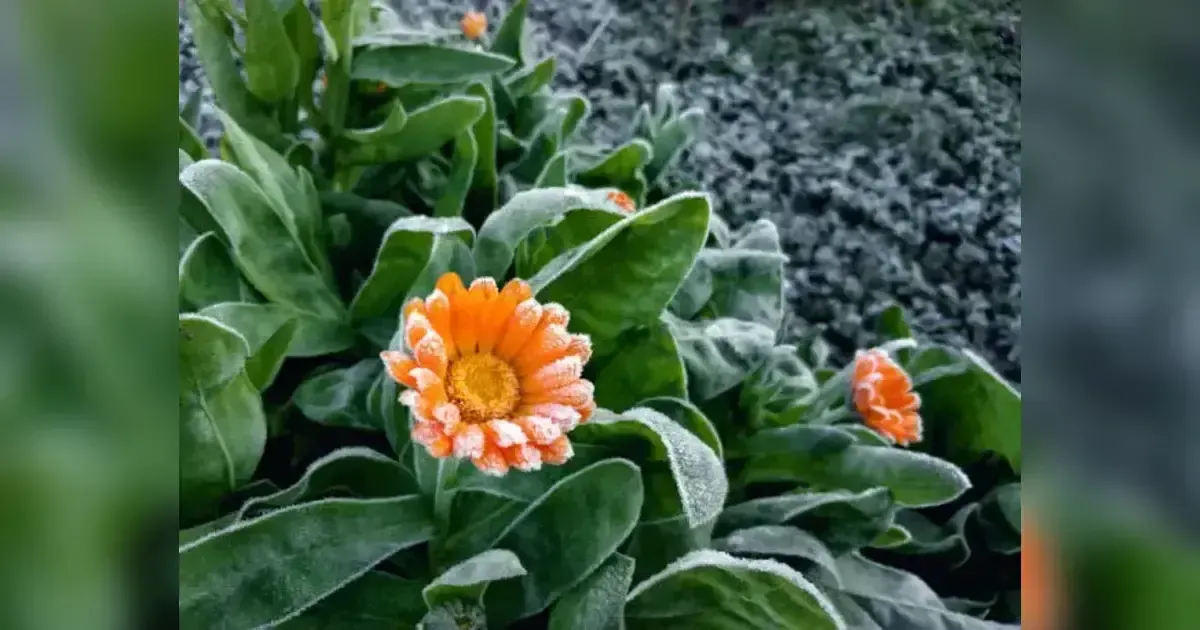We're going to be talking about some really cool season annuals that give you extended beauty in your garden right through those cooler months and then delve a little deeper into more specifics on how you can care for them, how you can work them into your overall design and so on and so forth
As the brilliant colors of summer begin to mellow, and fall is in the air, many a gardener truly dreads the demise of those favorite summer annuals. But there really is no need to put those gardening tools away just yet. What a great time of year to get some cool-season annuals in the ground, and give it that pop of color within this time of year.
Understanding Fall to Frost Annuals
Annuals are plants that work out their life cycles in one growing season. While perennials may return every year, the annuals have to be replanted each season. Still, some of these annuals are quite good, maybe stretching the gardening season well into fall, perhaps even resisting frost at first. That could make it possible for the plants also to be resistant to such a fluctuation in temperature extremes and continue their bloom into cooling-down weather.
Annual Key Characteristics From Fall to Frost
1. Cold Tolerance: They take cooler temperatures along with light frost without significant damage and do well.
2. Extended Blooming:They have a very long period of time in which they bloom into the fall and into early winter.
3. Shade Adaptability:Most have adapted to everything from full sun to partial shade.
4. Vigorous Growth:They are strong and sturdy and have remained steadfast this summer when all other flowers had started to look a bit worn.
Cool Annuals to Plant for Fall Through Frost
1.Pansies (Viola tricolor var. hortensis)
Pansy has grown to become one of the best choices for fall, even into winter gardens since there began an explosion in their popularity and development based on outstanding cold tolerance. Pretty flowers in every color, bright purples and yellows, and soothing blues and whites add a welcome burst of color in their surroundings. They take temperatures as low as 20° Fahrenheit -6° C, although they might more often than not keep on with blooming after a light frost.
Care tips
Plant: Plant in improved organic soil that drains well; container, hanging basket or direct bedding.
Water: The soil should not be made waterlogged.
Fertilizing: This plant shows off its better growth and bloom with a general-purpose, balanced fertilizer once every 4 to 6 weeks.
2.Snapdragons/Antirrhinum majus
Plant in well-draining soil full sun. Plant 6-12 inches apart for mature size.
They don't like dried-out soil, and they also don't like drowning. Overwatering will give them root rot.
Fertilizing: These need to be fertilized when in active growth every four weeks or six weeks with a balanced fertilizer.
3.Calendula (Calendula officinalis)
Brilliantly colored varieties of this calendula, or pot marigold bear daisylike flowers in orange and yellow. Cool-season annuals do well in the cool weather and take a light frost without a hassle.
Care Tips:
Full sun to partial shade - well-draining soil with good air circulation.
Water regularly but avoid letting the soil get waterlogged
Fertilization: Feed with an all-purpose fertilizer once or twice this season for continued blooming.
4.Ornamental Kale and Cabbage (Brassica oleracea)
Though flowering, ornamental kale and cabbage are grown for their vibrantly colored foliage. Adding this variance in texture to your fall garden is a great way to improve an otherwise lifeless landscape. Actually, these plants are cold-hardy and can be subjected to as low as 10° F (-12° C) temperature.
Care Tips
Planting: It would be ecstatic if they were planted under the full sun, but a partial shade is going to do just fine. Soil will be good enough, pretty much like any plant species; just make sure that it has good drainage. Watering: Keep them always in moist conditions, especially to keep them off with prevailing dry weather.
Fertilizing: Generally, they thrive on very little feeding, although a light application of a balanced fertilizer can be applied.
5.Violas
Like pansies, violas are small and flowery, hence great picks in the gardens of fall and winter. They come in almost every color combination you can imagine; some even have variegated markings. And they're that popular since they bloom at those times of the year when most of the flowers are on break-for example, during the cool seasons of the year.
Care Tips:
Plant violas from nursery plants in full sun to partial shade in well-draining soil.
Water: Soil should be moist but not waterlogged. Avoid all overhead irrigation; this will help minimize fungal diseases.
Fertilization: Balanced fertilizer every 4 to 6 weeks for general plant health and to promote flowering.
6.Cyclamen (Cyclamen persicum)
Upswept and heart-leaved flowers give these cool-temperature-sensitive plants zest whether in the garden or indoors in fall and well into winter.
Care Tips
Planting: Plant cyclamens in cool, shady areas in well-draining soil. Plants can be indoors or outdoors, depending upon the climatic region.
Watering: Keep the soil moist. Allow no waterlogging. Besides, it is better not to water the tubers themselves to avoid tuber rot.
Fertilizing: You can also use low nitrogen fertilizer every 4 to 6 weeks in the growth period.
Designing Your Fall to Frost Garden
Annuals bring color to add function into your design in falls to frost. Here come ways you may plant an arresting autumn garden.
1.Layered Plantings: Combine annuals of different heights and flowers in shades of color to add interest and texture in one bed, such as tall snapdragons combined with low-lying pan and violas.
2.Container Gardens: Color spills from containers onto patios, doorsteps, and any other outdoor location. The most spectacular display usually comes from several annuals planted together in big containers.
3. Hanging Baskets: Those hanging baskets of beauties on your porches and balconies cascade lots of beautiful fall-friendly annuals like the trailing pansies or violas.
4. Border Plantings: Hardy annuals are planted along paths and beds as borders. Several members, including calendulas and ornamental cabbages, add color against the backdrop of other plants.
5. Winter Interest:Work in some annuals that will tolerate winter and give weeks of interest. Ornamental kale and cabbage often look quite appealing well into the winter months after first frosts.
Problems and Pests
Yes, even the hardiest of annuals have issues as the cold weather starts to set in. Here are things to look out for and how to correct them:
1.Frost Damage:Most fall annuals take some frost, though an unexpected hard frost may still bring some damage to the plant. Covers, frost cloths, and even container movement into sheltered areas serve to cover plants.
2. Pest Problems: Sometimes cooler weather can encourage an outbreak of aphids or spider mites. Keep them close enough to each other that you're likely to catch an infestation and squash it with organic insecticides or natural predators.
3. Diseases: Wet encourages fungal diseases. Make sure your plants have good air circulation to prevent disease, and don't overhead water when possible.
4. Soil Quality: This will be affected by the cold temperature; the mulching has an effect of tempering the temperature and preserving the moisture in the soil so that if an amendment of the soil is needed by adding compost.
Annuals That Love Fall Until Frost: Frequently Asked Questions
1. What are annuals?
Annuals are plants that complete their life cycle-germination, flowering, seeding, and dying-with only one growing season. Unlike perennials, they don't come back the following year unless replanted.
2. Can annuals grow in the fall?
Yes, some annuals actually love the cooler temperatures of fall. These flowers do best once the temperature starts cooling down and will bloom right until first frost.
3. What are some examples of fall-blooming annuals?
Examples of cool-season flowering annuals include: pansies, snapdragons, calendula, ornamental kale, and marigolds. These flowers happen to be hardy enough to put on bright colorful displays during the cool weather.
4. How long will the fall annuals last?
They will, of course, normally thrive into the fall until the first hard frost of the year. Of course, they will last longer if your climate is milder, but will sooner or later be killed off by frost in colder regions.
5. How do I care for your fall annuals?
Plant in well-draining soil for optimum performance. Regular watering, especially when the plants do not receive adequate rainfall, will be required. Most cool season annuals will prefer full sun but may tolerate partial shade. Deadheading, removing the old flowers before seed is set, encourages additional blooming.
6. Will fall annuals grow in pots?
These are great Fall annuals, which can be planted in containers. They give a great look to patio, balcony, and entrance. Just plant them in a pot that has good drainage and watch the watering level since container plants have the tendency to dry out sooner than plants planted on the ground.
7. Are there frost-tolerant annuals?
The cool-season annuals, ornamental kale, and pansies will take light frost, but most other cool-season annuals cannot stand a hard freeze. It is thus always good to closely watch the weather patterns when the temperature cools.
8. What is the best time of planting fall annuals?
This will allow time for planting of fall annuals in late summer and early fall to get established before cool weather sets in. Varieties to be used must be suitable for your climate.
9. Can fall annuals be planted with perennials?
Well, yes, fall annuals fill a garden bed with color and interest when some of the perennials in your bed begin to look just a little tired at the end of the summer or early fall. Just be sure the annuals are not overshadowing or competing for space with your perennials.
10. Do you have any tips concerning fertilizing fall annuals?
Light fertilization with all the fall annuals is going to be quite handy, especially when these are planted in poorer or dead-soil nutrients. A balanced and slow-releasing fertilizer will just be what the flowers want to grow healthy with even longer periods of blooming.
Conclusion
Quite all right, it's extended into fall and even to winter with the selection of appropriate annuals. As a matter of fact, the best of plants kick off from fall right into frost and bring color and vibrancy during the cooler months. Options range from charming pansies through snapdragons to striking ornamental kale that will add sparkle to your garden this season. But with proper planning and care of your fall-and-winter garden, added with an ounce of creative problem solving, that beauty and joy it provides does not have to stop when the temperature takes that first cooling set. Now it is time to don the gloves and bask in the glory of some of those fabulous annuals-friendly to fall-and in your yard this season.


























